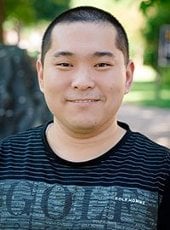Benjamin Ong is the principal investigator (PI) on a project that has received a $45,000 research and development contract from the Lawrence Livermore National Laboratory, entitled “Systematic Approaches to Construct Coarse-Grid Operators for Multigrid Reduction in Time.”
Multigrid Reduction in Time (MGRIT) [2] uses multigrid reduction techniques to enable temporal parallelism for solving initial value problems. It is known that the convergence rate of MGRIT [3] depends in part on the choice of time-stepping operators on the fine- and coarse-grid, which we call the fine-grid operator and coarse-grid operator respectively. An “ideal” coarse-grid operator is the fine-grid operator applied to approximate the solution on the coarse time interval.
In practice, the ideal coarse-grid operator is never used as the computational cost destroys any parallel speed-up that could be obtained using MGRIT. Instead, a common choice for a coarse-grid operator is a simple re-discretization of the fine-grid operator, i.e., if a single-step method is used on the fine-grid with time-step size h, then the same single-step method is used on the coarse-grid with time-step size m h, where m is a specified coarsening factor.
Numerical simulations are increasingly important in the study of complex systems in engineering, life sciences, medicine, chemistry, physics, and even non-traditional fields such as social sciences. Dr. Ong is working to solve these large-scale evolution problems on modern supercomputing architectures by using a hierarchy of space-time grids to accelerate the solution on the finest time grid.
References
Time permitting, Dr. Ong will explore the connection between the proposed sequences of generated coarse-grid operators to those recently proposed by Vargas et al. [4].
[1] Daniel Crane. The Singular Value Expansion for Compact and Non-Compact Operators. PhD thesis, Michigan Technological University, 2020.
[2] R. D. Falgout, S. Friedhoff, Tz. V. Kolev, S. P. MacLachlan, and J. B. Schroder. Parallel time integration with multigrid. SIAM Journal on Scientific Computing, 36(6):C635–C661, 2014.
[3] Andreas Hessenthaler, Ben S. Southworth, David Nordsletten, Oliver RÅNohrle, Robert D. Falgout, and Jacob B. Schroder. Multilevel convergence analysis of multigrid-reduction-in-time. SIAM Journal on Scientific Computing, 42(2):A771–A796, 2020.
[4] David. A. Vargas. A general framework for deriving coarse grid operators for multigrid reduction in time. Technical report, Lawrence Livermore National Laboratory, 2023.
About the Mathematical Sciences Department
Mathematicians at Michigan Technological University conduct research and guide students, applying concepts to fields like business, engineering, healthcare, and government. The Mathematical Sciences Department offers undergraduate and graduate programs with degrees in mathematical sciences, applied statistics, and statistics. Students supercharge their math skills at Michigan’s premier technological university. They graduate prepared for successful careers in academia, research, and tomorrow’s high-tech business environment.
Questions? Contact us at mathdept@mtu.edu. Follow us on Facebook or read the Mathematical Sciences news blog for the latest happenings.


